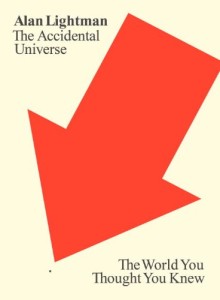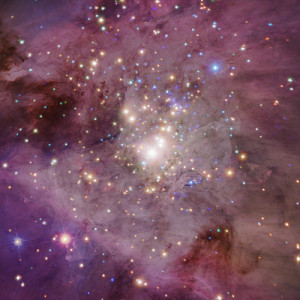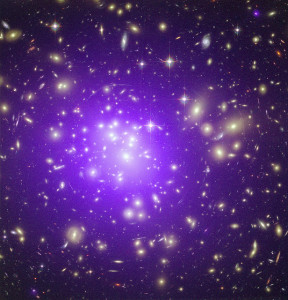We Are a Cosmic Accident: Alan Lightman on Dark Energy, the Multiverse, and Why We Exist
SCIENCE, 10 Feb 2014
Maria Popova, BrainPickings – TRANSCEND Media Service
How we drew the one we have from the zillions of possible universes in the cosmic lottery hat.
 Questions like why our world exists and what nothing is have occupied minds great and ordinary since the dawn of humanity, and yet for all our scientific progress, they continue to do so, yielding only hypotheses rather than concrete answers. But there is something immutably heartening in the difference between the primitive hypotheses of myth, folklore and religion, which handed off such mysteries to various deities and the occasional white-bearded man, and the increasingly educated guesses of modern science.
Questions like why our world exists and what nothing is have occupied minds great and ordinary since the dawn of humanity, and yet for all our scientific progress, they continue to do so, yielding only hypotheses rather than concrete answers. But there is something immutably heartening in the difference between the primitive hypotheses of myth, folklore and religion, which handed off such mysteries to various deities and the occasional white-bearded man, and the increasingly educated guesses of modern science.
In the title essay of his excellent The Accidental Universe: The World You Thought You Knew (public library), which also gave us this beautiful meditation on science and spirituality, Alan Lightman points to fine-tuning — the notion that the basic forces propelling our universe appear to be fine-tuned in such a way as to make the existence of life possible — as a centerpiece of how modern scientists have attempted to answer these age-old question.
The most compelling example of fine-tuning is dark energy — an invisible and unexpected cosmological force that hides in empty space and works against the universe’s slowing expansion, a sort of “cosmic accelerator pedal” that is speeding up its expansion and causing galaxies to drift away from one another. Mysterious as it is, scientists estimate that dark energy accounts for nearly three quarters of all the energy in the universe — a fact that renders it what Lightman aptly calls “the ultimate éminence grise … the invisible elephant in the room of science.” Still, dark energy might hold the key to illuminating the eternal conundrum of why we exist. Lightman writes:
On one thing most physicists agree. If the amount of dark energy in our universe were only a little bit different than what it actually is, then life could never have emerged. A little larger, and the universe would have accelerated so rapidly that matter in the young universe could never have pulled itself together to form stars and hence complex atoms made in stars. And, going into negative values of dark energy, a little smaller and the universe would have decelerated so rapidly that it would have recollapsed before there was time to form even the simplest atoms.
But the natural question, then, is who or what did this fine-tuning. One explanation that doesn’t require an omnipotent “Designer” or benevolent “Creator” — in other words a theory that doesn’t succumb to the philosophy of ignorance — is the concept of multiverses, a premise of which is that the universe only “exists,” or has the properties we’re able to observe, to the extent that and because we are here to observe it. Lightman writes:
Out of all the possible amounts of dark energy that our universe might have, the actual amount lies in the tiny sliver of the range that allows life. There is little argument on this point. It does not depend on assumptions about whether we need liquid water for life or oxygen or particular biochemistries. It depends only on the requirement of atoms. As before, one is compelled to ask the question: Why does such fine-tuning occur? And the answer many physicists now believe: the multiverse. A vast number of universes may exist, with many different values of the amount of dark energy. Our particular universe is one of the universes with a small value, permitting the emergence of life. We are here, so our universe must be such a universe. We are an accident. From the cosmic lottery hat containing zillions of universes, we happened to draw a universe that allowed life. But then again, if we had not drawn such a ticket, we would not be here to ponder the odds.
And just to make sure we’re properly dizzied, Lightman adds the scientific equivalent of David Foster Wallace’s unforgettable This Is Water and writes:
If the multiverse idea is correct, then the historic mission of physics to explain all the properties of our universe in terms of fundamental principles — to explain why the properties of our universe must necessarily be what they are — is futile, a beautiful philosophical dream that simply isn’t true. Our universe is what it is simply because we are here. The situation can be likened to that of a group of intelligent fish who one day begin wondering why their world is completely filled with water. Many of the fish, the theorists, hope to prove that the cosmos necessarily has to be filled with water. For years, they put their minds to the task but can never quite seem to prove their assertion. Then a wizened group of fish postulates that maybe they are fooling themselves. Maybe, they suggest, there are many other worlds, some of them completely dry, some wet, and everything in between.
The Accidental Universe is an exquisitely mind-bending read in its entirety, the kind that will leave you at once educated and disoriented, but above all able to embrace and celebrate the profound uncertainty that propels rather than hinders human knowledge.
Public domain photographs via Flickr Commons / Smithsonian Institution
_______________________________
Brain Pickings is the brain child of Maria Popova, an interestingness hunter-gatherer and curious mind at large obsessed with combinatorial creativity who also writes for Wired UK and The Atlantic, among others, and is an MIT Futures of Entertainment Fellow. She has gotten occasional help from a handful of guest contributors.
Go to Original – brainpickings.org
DISCLAIMER: The statements, views and opinions expressed in pieces republished here are solely those of the authors and do not necessarily represent those of TMS. In accordance with title 17 U.S.C. section 107, this material is distributed without profit to those who have expressed a prior interest in receiving the included information for research and educational purposes. TMS has no affiliation whatsoever with the originator of this article nor is TMS endorsed or sponsored by the originator. “GO TO ORIGINAL” links are provided as a convenience to our readers and allow for verification of authenticity. However, as originating pages are often updated by their originating host sites, the versions posted may not match the versions our readers view when clicking the “GO TO ORIGINAL” links. This site contains copyrighted material the use of which has not always been specifically authorized by the copyright owner. We are making such material available in our efforts to advance understanding of environmental, political, human rights, economic, democracy, scientific, and social justice issues, etc. We believe this constitutes a ‘fair use’ of any such copyrighted material as provided for in section 107 of the US Copyright Law. In accordance with Title 17 U.S.C. Section 107, the material on this site is distributed without profit to those who have expressed a prior interest in receiving the included information for research and educational purposes. For more information go to: http://www.law.cornell.edu/uscode/17/107.shtml. If you wish to use copyrighted material from this site for purposes of your own that go beyond ‘fair use’, you must obtain permission from the copyright owner.

